Editor’s Note: The content in this article is presented for informational purposes. The article does not replace quality training from a qualified instructor.
A 1981 study by the NYPD analyzed 6,000 officer-involved shootings that occurred during the previous 10-year period. While many of these cannot be categorized as gunfights, there is a great deal of insight that can be realized when reviewing this information. A key point that struck a chord with me was that the ability to recognize and use cover during a gunfight was considered the single most important factor in the officer’s survival during such a confrontation. There are stark differences between police and citizen encounters with the criminal element, but one would be foolish to not consider use of cover as being a potential lifesaving tactic.
Don’t agree with that? Like many of my peers from the Boomer Generation, just about all of my recreation during those formative years was spent in the great outdoors. Quite simply, video games did not exist and watching television after school was simply unheard of. Instead, our fun time was spent playing ball, riding bikes, or engaging in simulated mortal combat. That latter past time will no doubt ruffle the feathers of some early 21st century parents, but we did indeed spend hours with our toy six guns and rifles playing army, cowboys, or cops and robbers.
Long before I ever received any sort of formal firearms instruction, it was at this point in my life I first became acquainted with tactics. At some point in our informal contest someone would shout out, “Bang, you’re dead”. The retort often heard was, “No, you didn’t get me! I’m behind cover”. Even back then, our nine-year-old minds came to realize that getting something between you and an adversary was a pretty good idea.
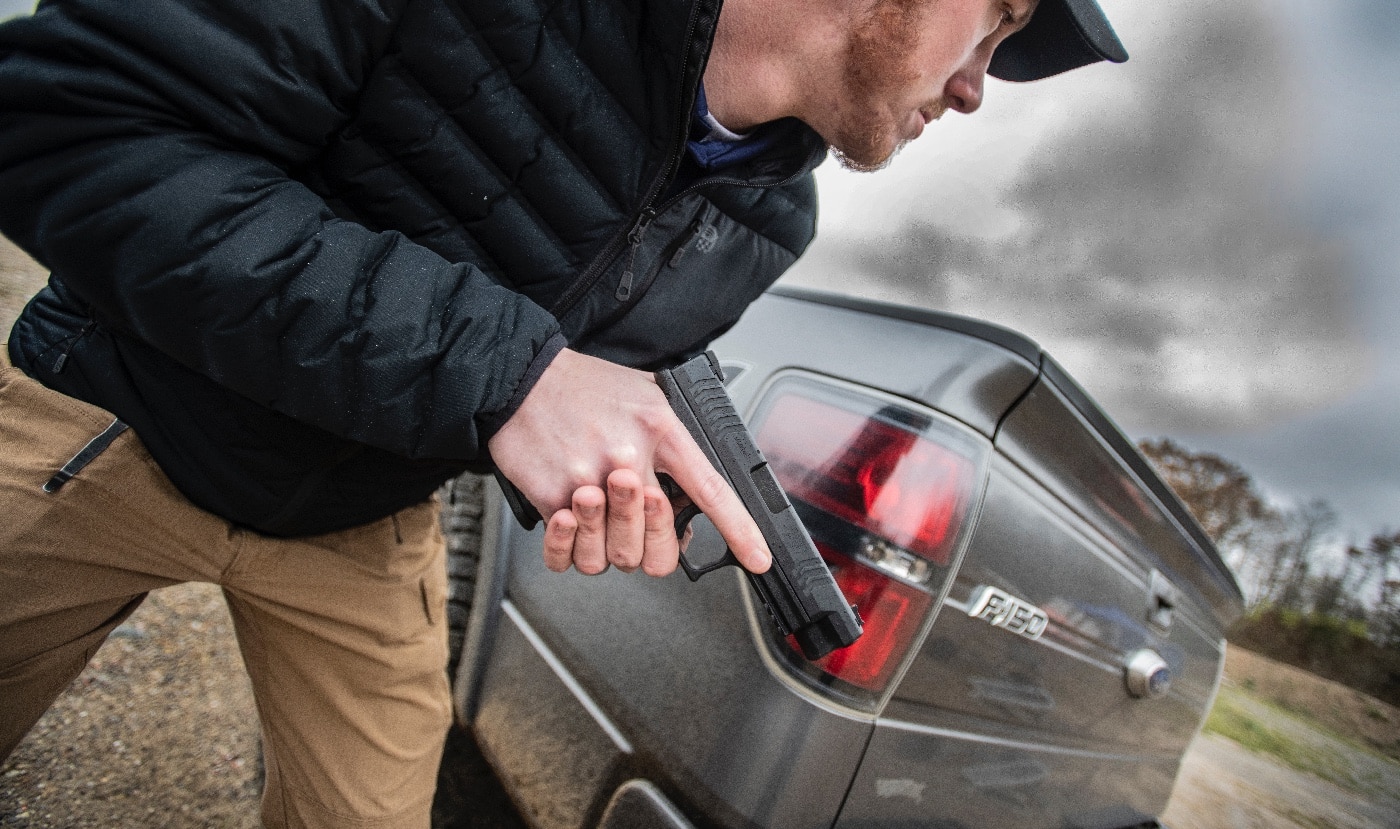
Cover might be defined as any object or surface that is capable of stopping the rounds directed at you. Objects that may afford protection against handgun or shotgun threats may come up short if your adversary is armed with a high-velocity, centerfire rifle. Nonetheless, getting your body behind something that conceals your form is a huge advantage, even it doesn’t afford total ballistic protection.
How important is the use of cover? I ask my students on Day One of their firearms training what matters most in a gunfight. How about not getting shot? Clearly, getting shot with any sort of round can prove fatal and it behooves us to take steps that it doesn’t happen. I would submit moving to cover is not always feasible but, if the opportunity presents itself, we should take advantage of it.
Recognizing Cover
In order to stop a round fired your way, the object between you and the threat must be somewhat formidable. A big oak tree or a block wall will probably defeat most all handgun rounds, while interior walls come up short. Although vehicles aren’t quite the same “heavy metal” they were a few decades ago, they can protect you from incoming rounds if you take the right position.
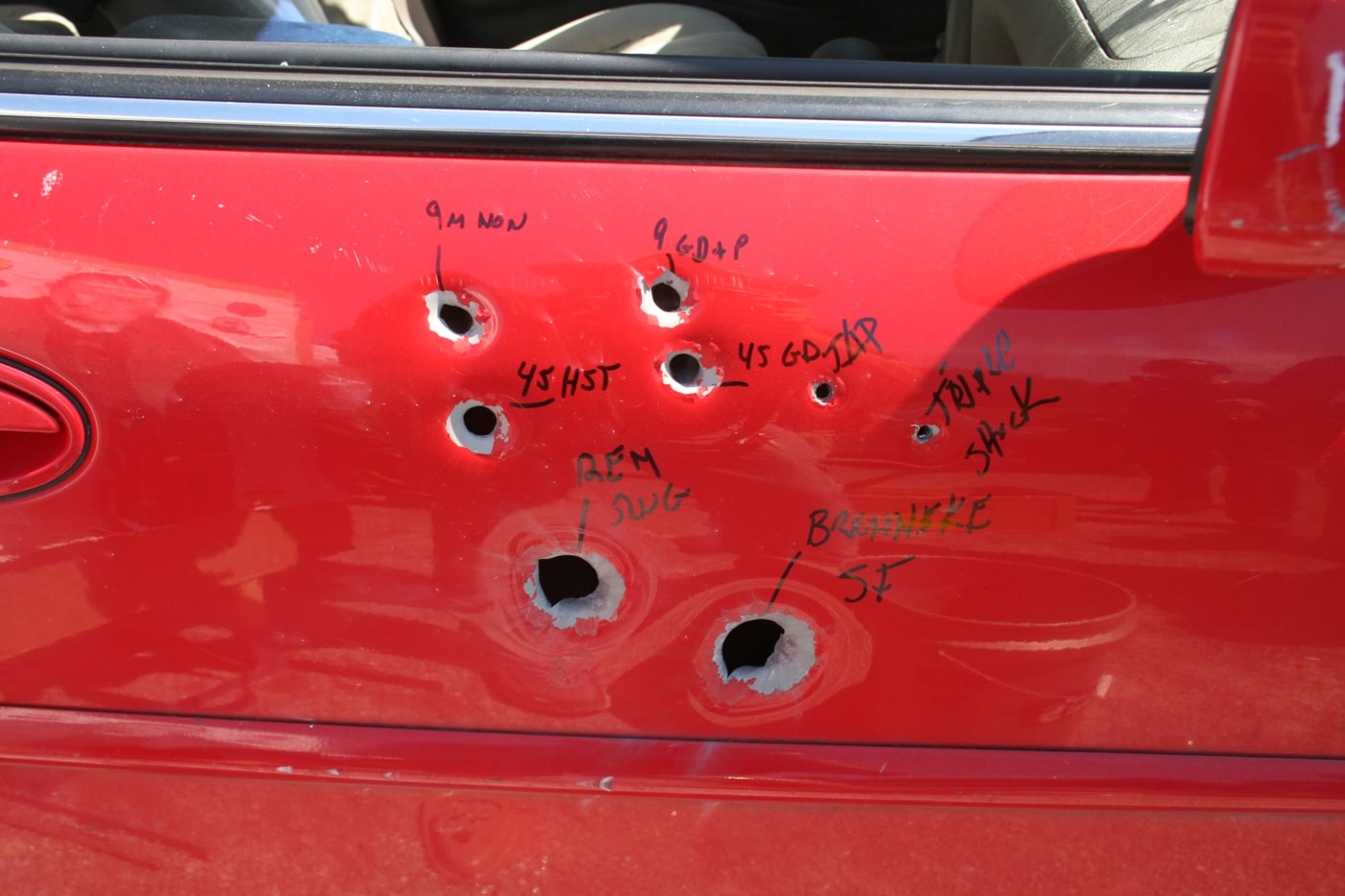
Since motor vehicles are part of our everyday routine, it is important to understand what sort of protection they can afford. To meet mileage standards, today’s vehicles are lighter and have smaller engine blocks. Vehicles are constructed of steel, rubber and other synthetics, and there are few absolutes as to what rounds will penetrate and those that will not. An engine block or brake drums will stop just about anything coming your way, but being able to take advantage of that position may not be in the cards.
What about car doors? It has been my observation that a very large percentage of handgun rounds will not totally penetrate. With centerfire rifle rounds and shotgun slugs, however, all bets are off. Again, there are any number of variables that come into play such as the angle of the shot, is the door open or closed, and are the widows or down. Doors are hardly bulletproof, but all things considered, I would rather take my chances with a door than standing out in the open.
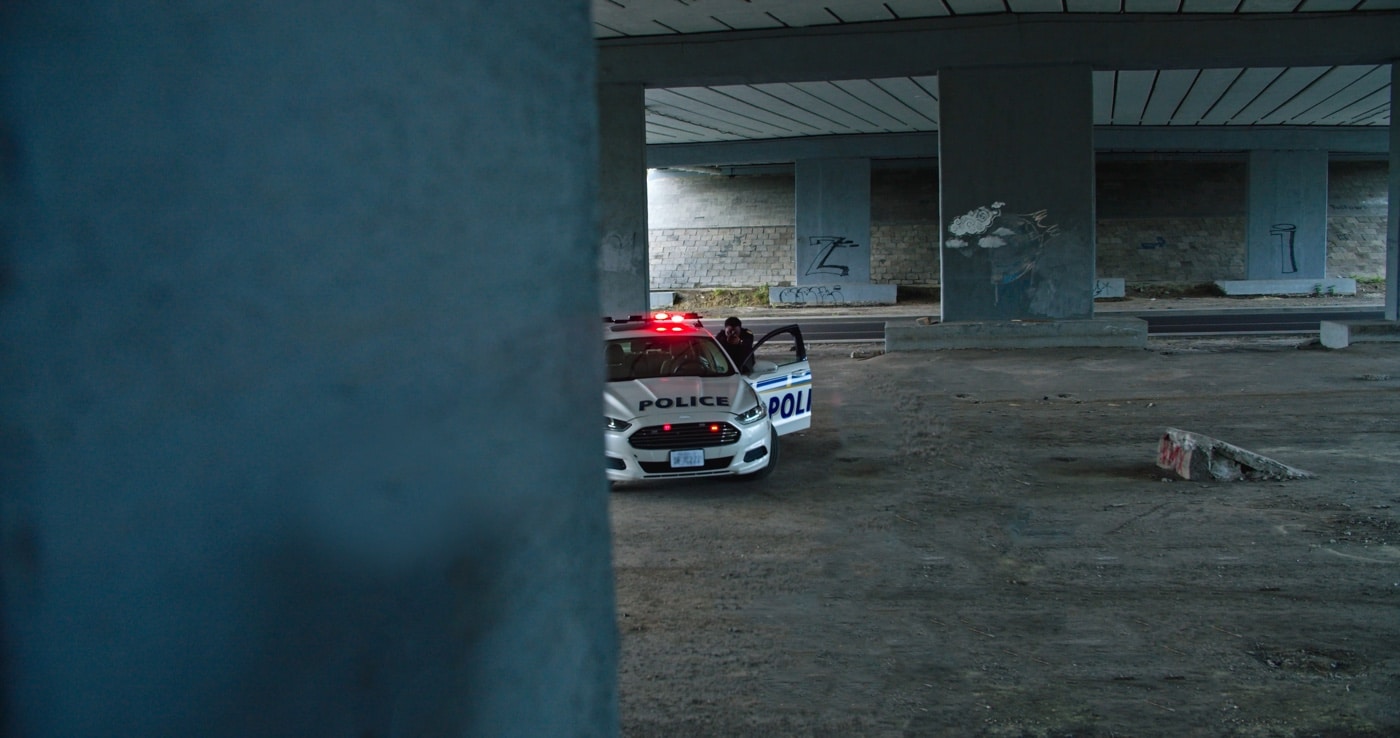
No doubt, many of us have considered home defense scenarios. Unfortunately, most of the objects and surfaces found in residential homes provide little protection, and rounds fired indoors will breach interior walls, potentially endangering family members on the other side. However, getting behind something to conceal your form will afford you an advantage. Just be mindful of the directions you can fire without putting others at risk.
Concealment and Obstacles
Things you might get behind that don’t afford protection against incoming rounds can be categorized as concealment. Common examples could include interior walls, wooden doors, shrubs, and even darkness. Even though concealment does not afford protection against incoming fire, it may cause an adversary to momentarily hesitate, giving you a chance to gain an advantage.
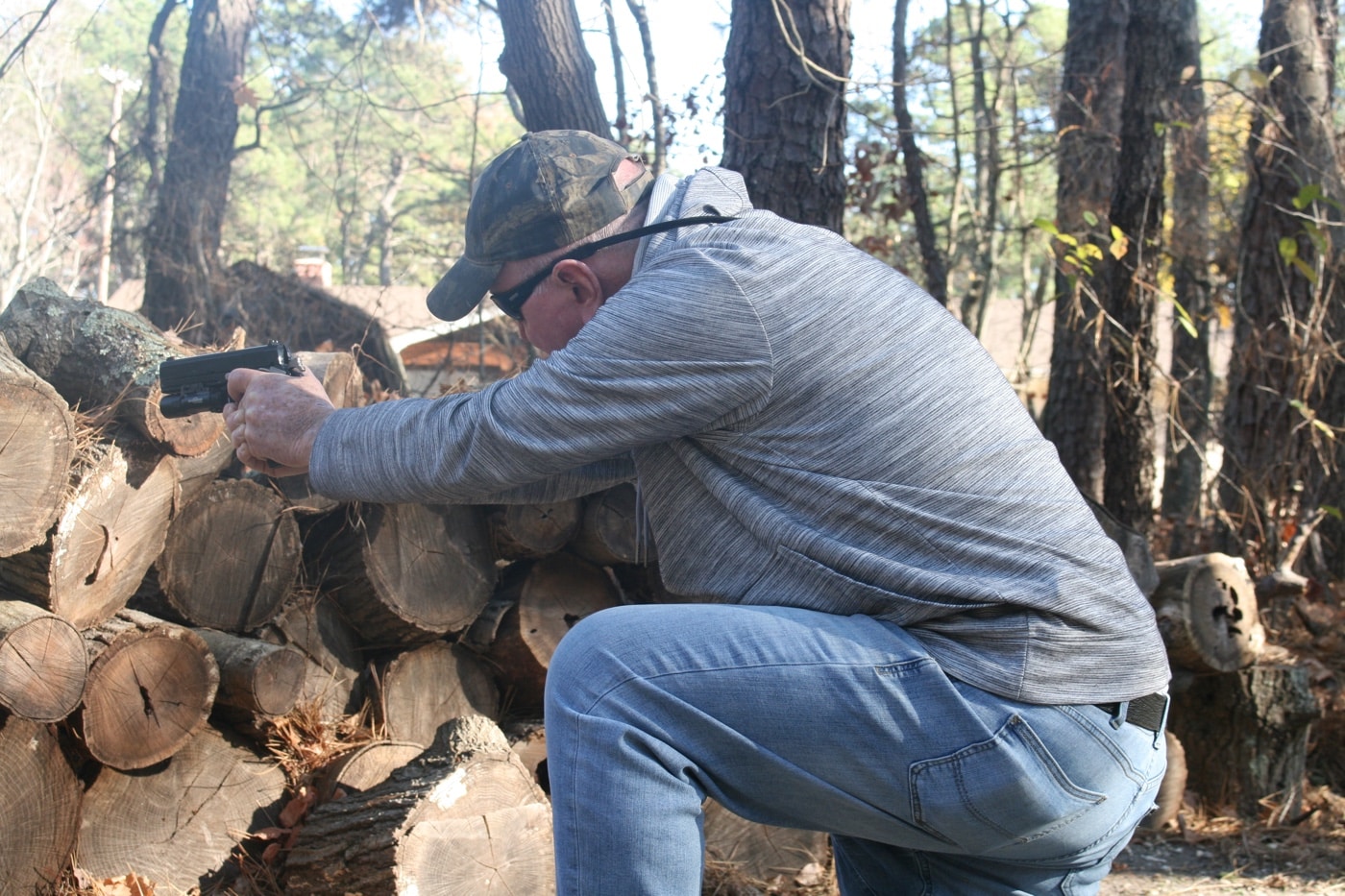
Obstacles are common objects that may prevent an assailant from coming at you in a straight line. Examples might include a shopping cart, trash can, chair or other types of furniture. While obstacles provide no protection at all against an assailant armed with a firearm, they can be a huge advantage in helping defeat an empty-hand attack or an attack with a contact weapon such as a knife or bludgeon. If you can jockey for position and get such an object between you and your assailant before he launches the attack, this may buy you precious seconds to draw your higher power and take the tactical high ground.
Minimize Your Exposure
Most police firing ranges have simulated cover consisting of wooden posts or plywood barricades, typically set 25 yards away from the targets. At some point in their initial training, new officers are given some instruction on use of cover and, unfortunately, many receive the wrong message.
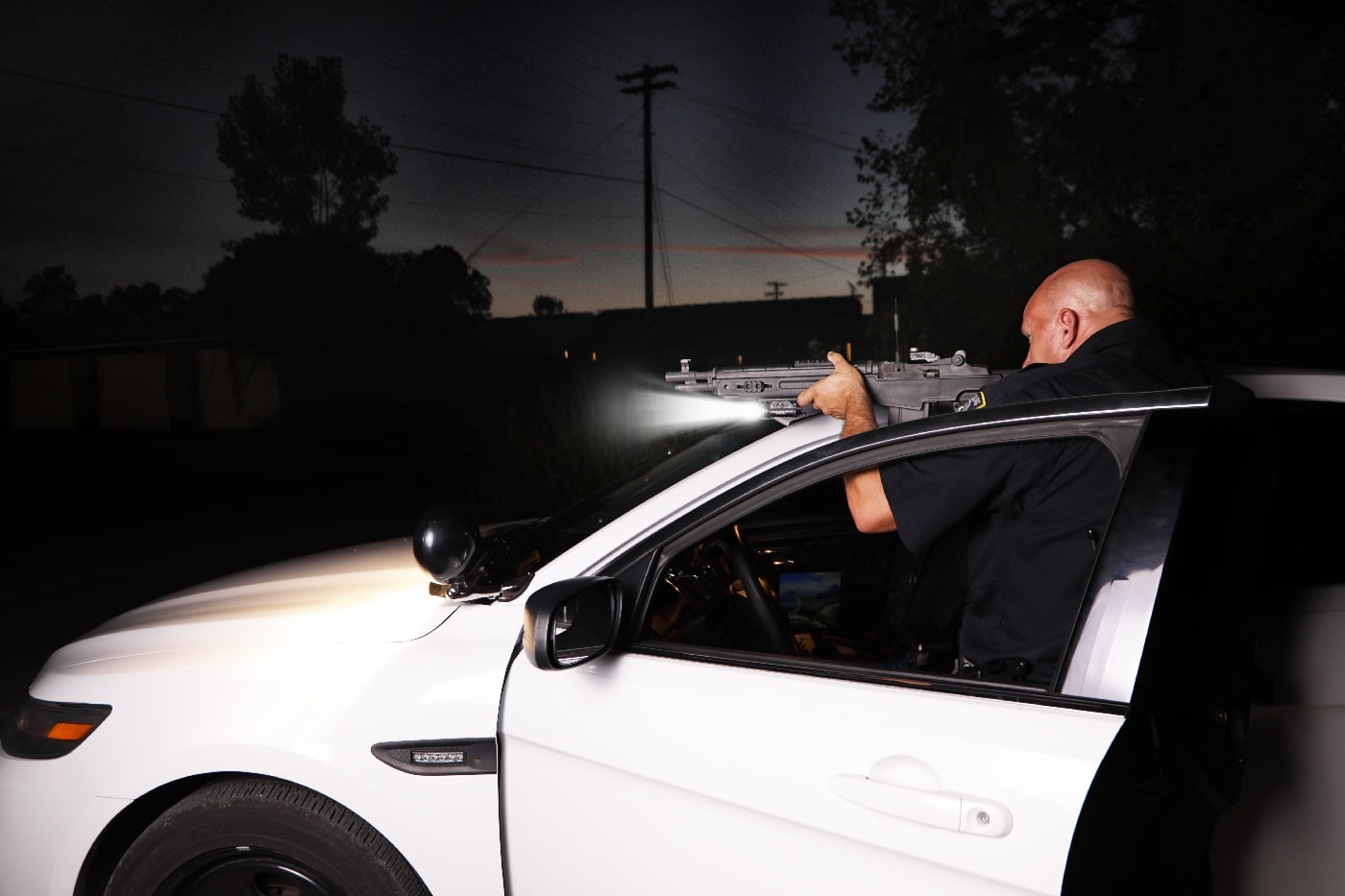
Back in the old days, we were instructed to place the back of the hand against the edge of the barricade for support to help achieve that elusive high score. Although this works great in the artificial environment of the range, I think it’s fatally flawed for real life. Shooters who take such a position expose far too much of the body to incoming fire. I would also suggest getting at least four to six feet away from any real-world cover. Rounds that miss you but impact the cover could send secondary missiles of wood, concrete, or metal fragments back your way that could cause an injury.
If you have fired from a covered position, minimize your exposure time where you can be struck by hostile fire. Make sure as much of your body as possible is behind the cover, including your feet and legs. Fire one or two shots and get back inside the cover. Should you have to fire again, if possible, change your firing location. Being unpredictable is the key to success.
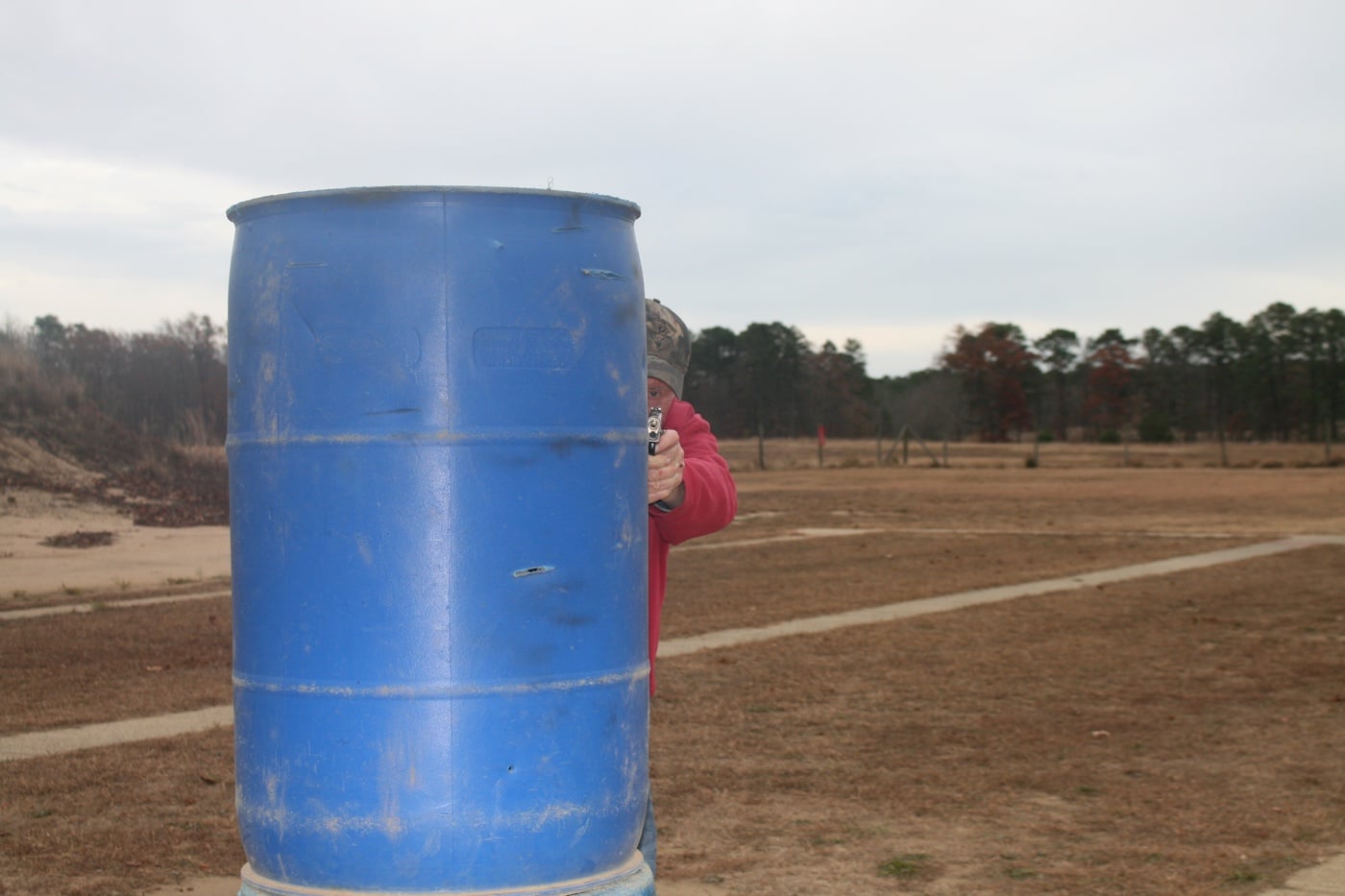
Popping out over the top of a vehicle hood or low wall can be especially dangerous. Before you can even get a visual lock on an adversary, you have exposed the most vital part of your anatomy. Sometimes this can’t be avoided, but if there is a different way to return fire, that would be better.
Mind Games
The “what if” concept is something I picked up some years ago and is something you may want to consider. Danger, particularly for the responsible citizen, is unpredictable and can unfold at any time. While we may perceive a higher level of danger while traveling or doing business in that “sketchy” part of town and really have the radar working, threats often appear when you least expect it.
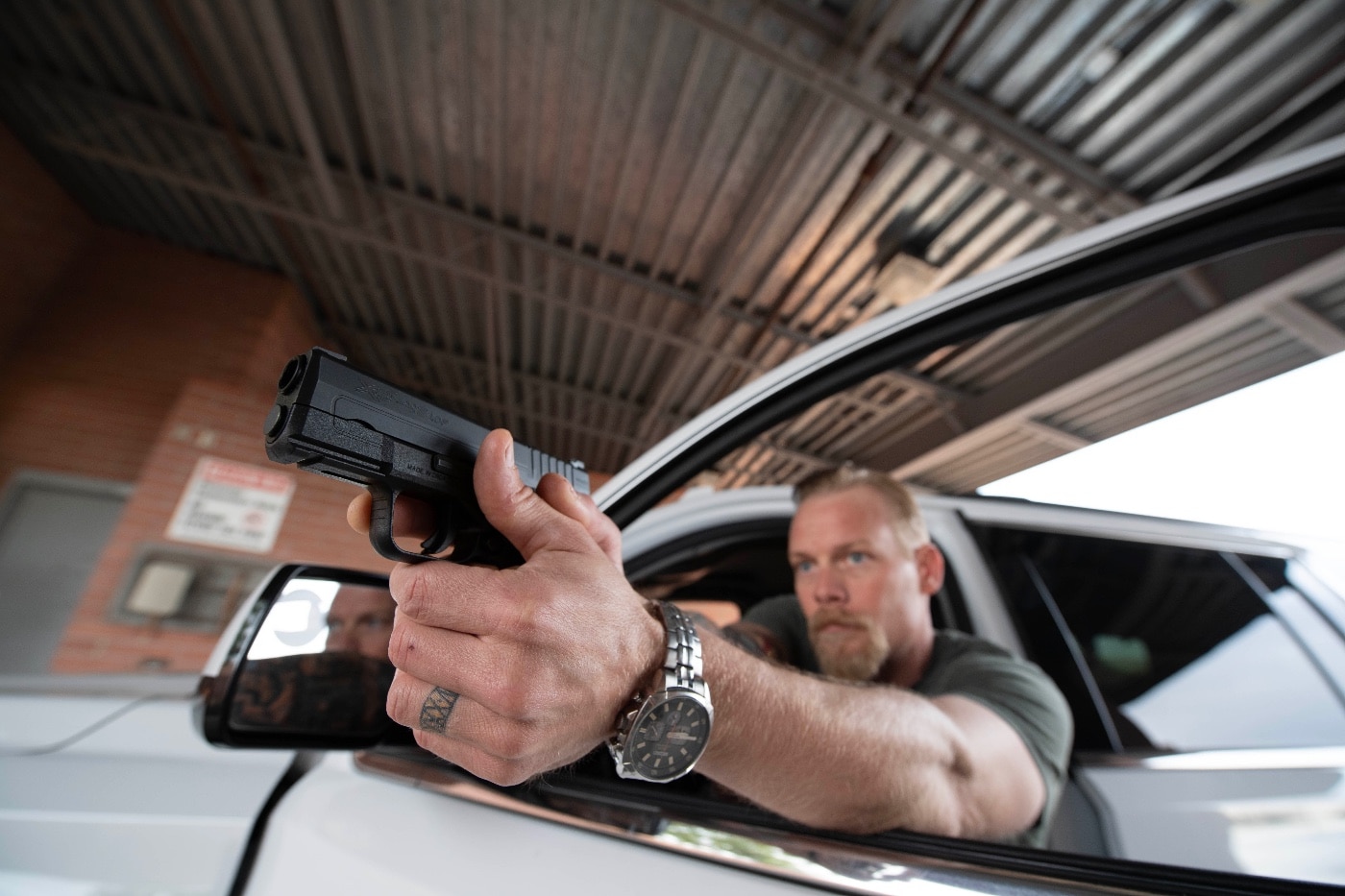
Exactly how do you prepare for that? Consider randomly setting the alarm on your cell phone to go off sometime during the day. It may go off when you are at your workplace, walking down the street, or in your home. Once the alarm goes off, imagine you have a potentially deadly threat inside of conversational distance and have five seconds to solve the problem.
So, what do you do? Is there cover a step or two away? Can I get something between me and my imaginary assailant as I draw my pistol? Do I stand my ground and fight it out? I’m not suggesting that you rehearse the physical aspects of this in the office or out on the street, but it will get you thinking. Can I get to my gun quickly? Who or what is around me at this point in time? Can I spot cover and can I move? Trust me, this will get you thinking!
Law enforcement officers recognize that there is certainly a high risk of danger that comes with the job they do, and often have some forewarning of a potential threat. Responsible citizens have no such luxury and are often caught up in a fast-breaking situation with little warning.
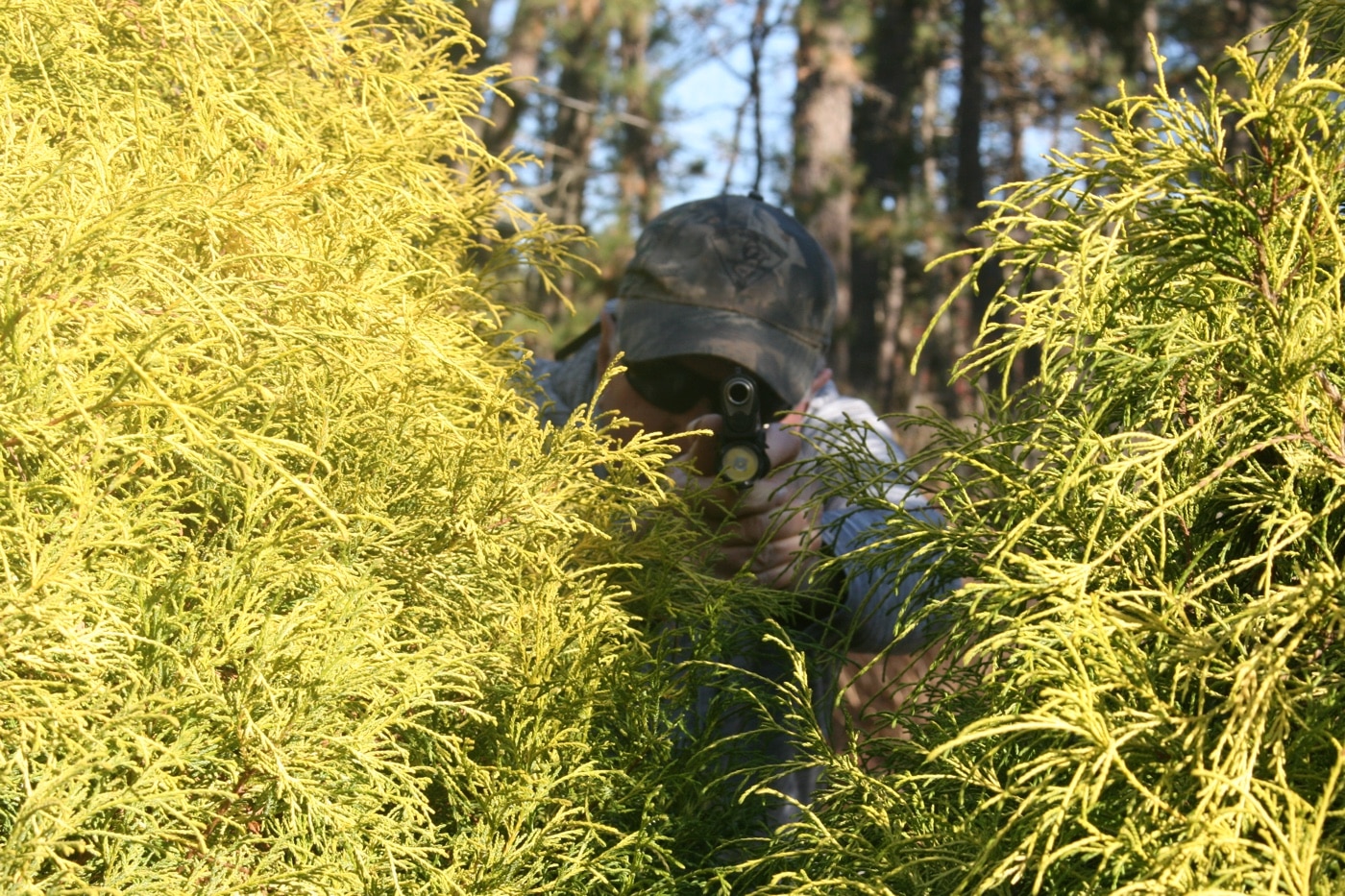
But in many cases, danger can be averted, providing you stay switched on. If something doesn’t look right, it probably isn’t. And if possible, get out of there! But if there is no way out, check out your surroundings to see what, if anything, you can use to your advantage. Can you move and challenge or fight from a position of advantage? If so, that gives the best chance of prevailing.
Editor’s Note: Please be sure to check out The Armory Life Forum, where you can comment about our daily articles, as well as just talk guns and gear. Click the “Go To Forum Thread” link below to jump in and discuss this article and much more!
Join the Discussion
Featured in this article
Read the full article here

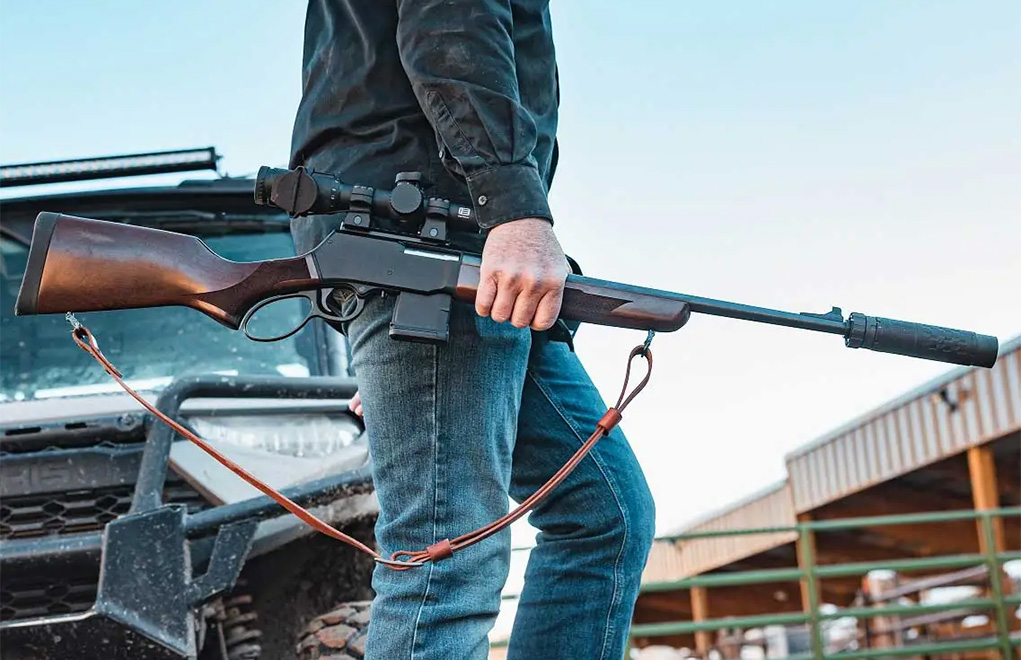

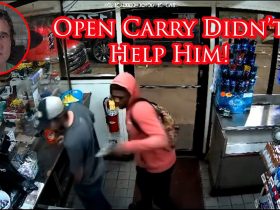

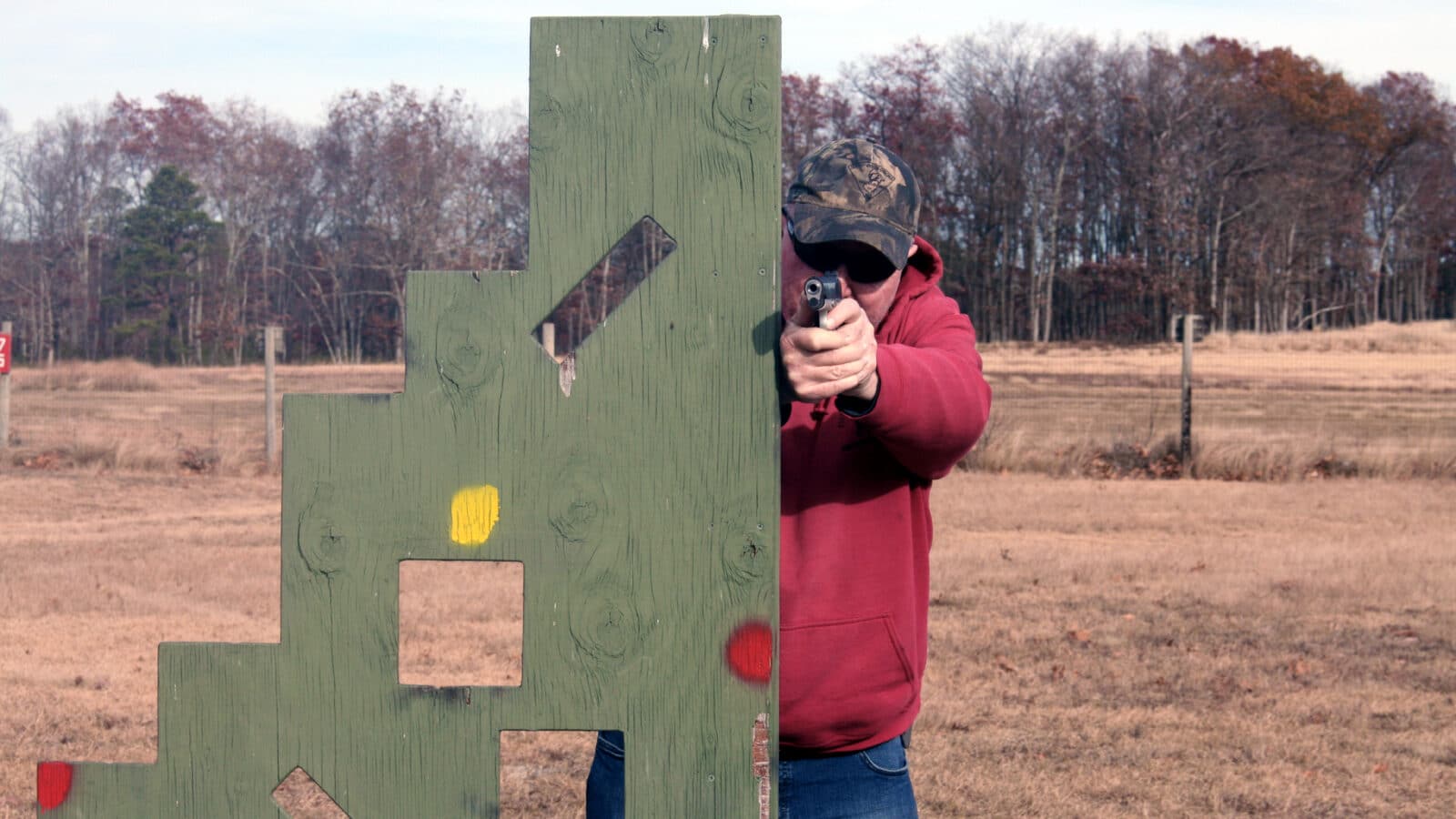









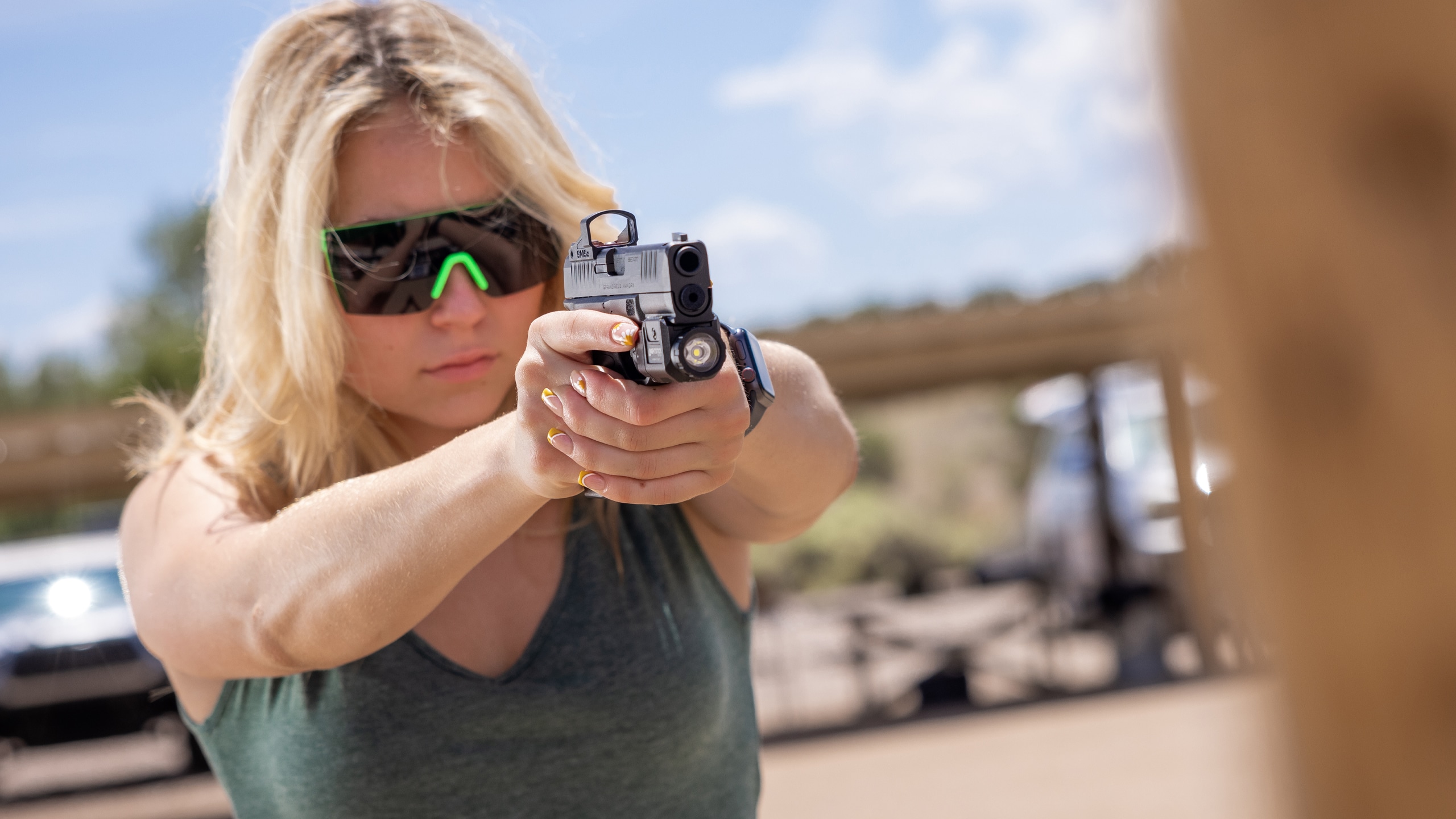
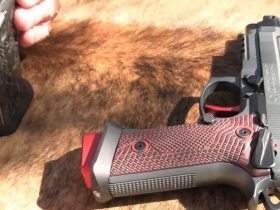


Leave a Reply